A Complete Guide to Visiting the City of Hai Phong
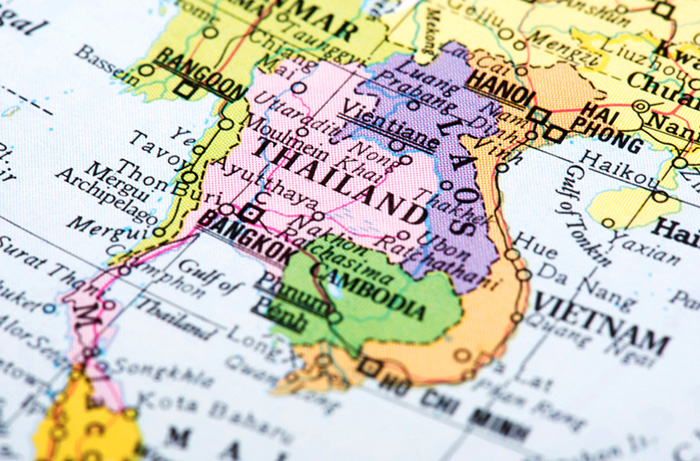
A trip to northern Vietnam should always include a stop at Hai Phong, an important industrial center and seaport in the Red River Delta. Whether you travel to Hai Phong to seek out its beautiful architectural and cultural treasures or stop on the way to Ha Long Bay and beyond, do not miss the opportunity to see what Hai Phong has to offer.
The History of Hai Phong
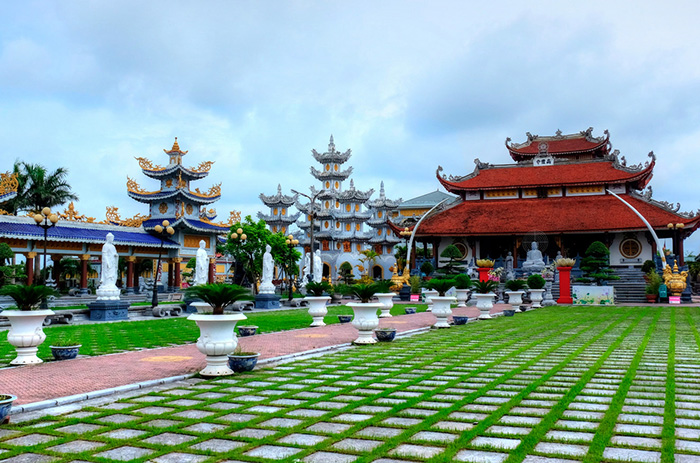
Hai Phong’s recorded history dates to 43AD, when Le Chan, a formidable female general, founded the strategic city to repel invading Chinese troops. The city’s name means “coastal defense.” The fierceness of the ocean nearby and its critical location on the waterways that lead into Vietnam’s interior not only made it easily defendable but also vastly important for trade and commerce with Hanoi and the seafaring traders that arrived from India, China, the Mediterranean, and, eventually, Western Europe and Britain.
Hai Phong continued to be an important, well-defended city throughout the Middle Ages. In 1881, however, tragedy struck when a vicious cyclone tore through the city and killed around 300,000 people, leaving it open to invasion. In 1885, the French gained control of Vietnam and turned Hai Phong into their naval center to support nearby Hanoi, the political center. Later, the city served as North Vietnam’s sole seaport during the Vietnam War.
Today, Hai Phong is the third-largest city in Vietnam after Hanoi and Ho Chi Minh City and the second-largest economic center in Northern Vietnam, home to thriving industries, such as agriculture, fishing, and manufacturing. In recent years, it has also gained popularity as a tourist destination. Hai Phong serves as both a destination of its own and a starting point to Ha Long Bay, Cat Ba Island, and other area attractions.
Best Time to Visit

Northern Vietnam has two seasons: hot-and-wet and cool-and-dry. While Vietnam is a beautiful place to visit at any time of the year, spring occurs in March and April, and fall takes place September through December, offering the most pleasant temperatures and best chances of cooperative weather.
About Hai Phong
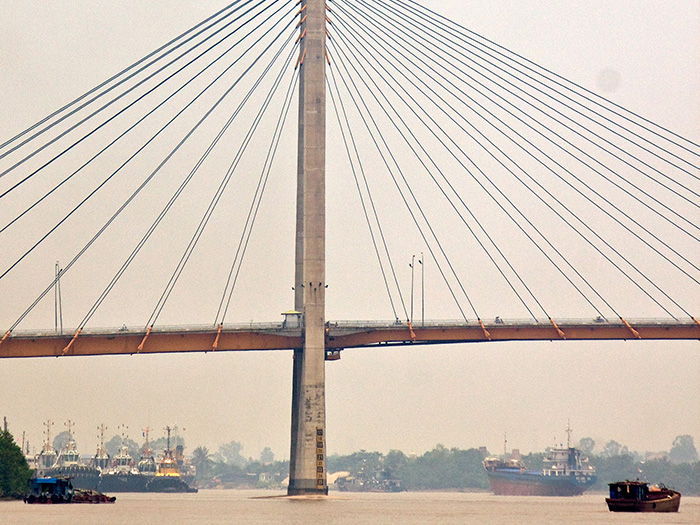
Hai Phong is located on the northern arm of the Red River Delta, a vast dumping ground for the rich silt picked up during the Red River’s long 750-mile journey (1,200 km) through southwestern China and out into the Gulf of Tonkin. Hai Phong is also located near huge coal deposits, which helped turn the city into a center for industry.
Although it has a strong commercial and industrial base, the city itself is a delightful mix of colonial construction and modern construction. Cultural attractions abound, including temples, shrines, pagodas, mausoleums, museums, art, architecture, and restaurants that serve up delicious local fare. You will also find beautiful beaches, an abundance of shopping, and an exuberant nightlife scene.
One of Hai Phong’s most iconic sights is streets lined with Flame of the Forest trees, which delight the eyes with their bright red blooms during the summer months. The annual Red Flamboyant Festival in May brings art troupes from all over Asia, as well as other performances and exhibits to celebrate the vivid flowering of the trees.
Attractions Near Hai Phong
Du Hong Pagoda
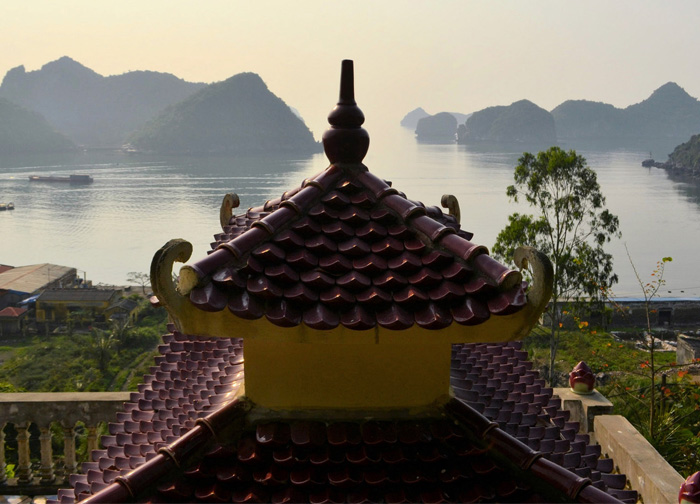
Built during the Le Gia Tong dynasty of the 17th century, this Buddhist pagoda reflects an ancient and respected building style from the 10th century, including Indian- and Cambodian-style roofs in the alter rooms and more recent artistic additions from the early 20th century. The beautifully constructed pagoda is overlooked by a bell tower and is nestled among serene gardens. Visitors can enjoy the peaceful quiet, bring bread to feed the turtles and fish, and revel in the artistry evident all throughout the compound. Please dress respectfully when visiting this holy site.
Hong Khen Communal House (Nhan Tho Communal House)
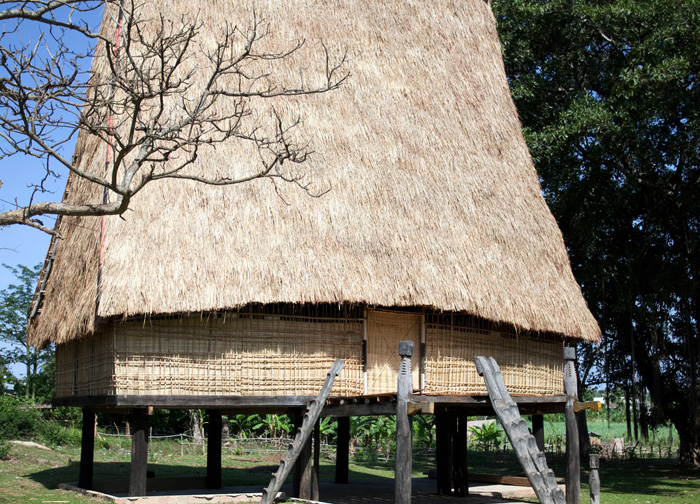
Built in 1717 to honor a Vietnamese hero named Ngo Quyen, the communal house was moved in 1841 from the original Khen Village to its current position on Hong Khen Street. The structure is used as a temple by the community, and it is renowned for the exquisite woodwork used in the construction, as well as the 300-plus brightly colored dragon images and statues contained within. The site is open to visitors all year round and often houses festivals and religious ceremonies.
Find the Hong Khen Communal House in Du Hong Khen Ward in the Le Chan District.
Municipal Theater and Municipal Theater Square
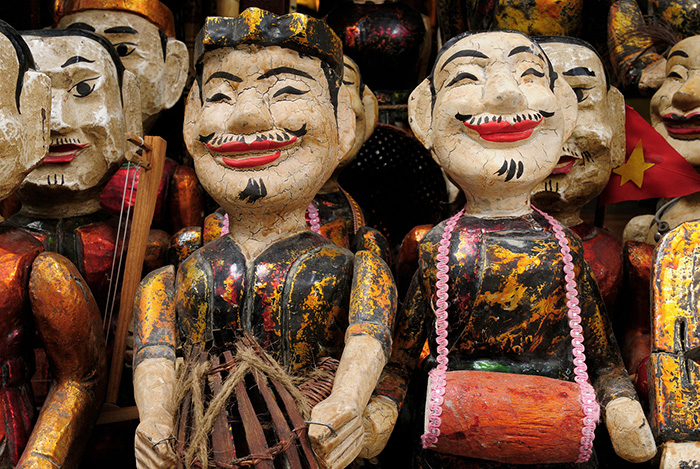
Located in Hai Phong’s city center, the Municipal Theater is home to important celebrations and events throughout the year. Designed by French architects and built using imported materials, the theater is designed to hold up to 400 people. The ceiling of the theater is painted with frescoes and flowers, as well as the names of famous writers and artists. Outside, Theater Square provides a peaceful and beautiful oasis from the city, with fountains, flower gardens, and sparkling lights. Call ahead or check with your hotel concierge for public opening times and dates, as these change according to the theater’s event schedule.
Hai Phong City Museum
What the museum lacks in quantity, it makes up for in quality. Housed in a beautiful Gothic colonial building, the museum displays artifacts from Hai Phong’s past, including finds from nearby ancient tombs, ceramics, taxidermy, and remnants of war in the garden area—all with written English translations. For those looking to understand Hai Phong’s role as an important seaport over the centuries, a visit to this museum is a wealth of information. Be advised that it is only open four days a week for a couple of hours at a time, so plan your sight-seeing schedule accordingly.
Museum of Military Region III
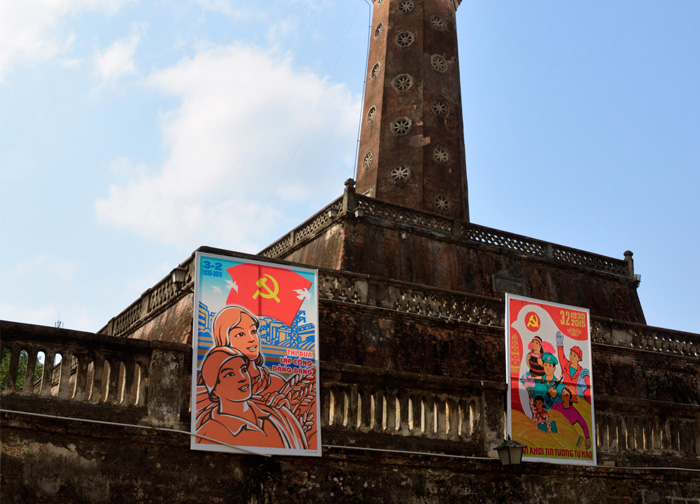
For those interested in Vietnam’s war history, this museum has it all. Established in 1969 by the Political Bureau of Military Region III, visitors will gain a better perspective of the fierce desire for independence against colonizers and foreign invaders that the native Vietnamese have exhibited throughout the decades, including France’s colonization in the 18th and 19th centuries and U.S. imperialism in the 19th and 20th centuries. Exhibits include fascinating war detritus such as bombs and other weapons.
Navy Museum
On the road from Do Son Resort to downtown Hai Phong, the Navy Museum is contained on a ship anchored next to the Rao Bridge. The museum explores Vietnam’s naval exploits in the navy’s quest to gain independence throughout the 20th century, and it is a popular museum sought out by war veterans from both sides of various wars. The museum is packed with seafaring artifacts, as well as information about important Vietnamese naval battles. Admission is free, and opening hours daily 8:30AM-4:00PM
Nghe Temple
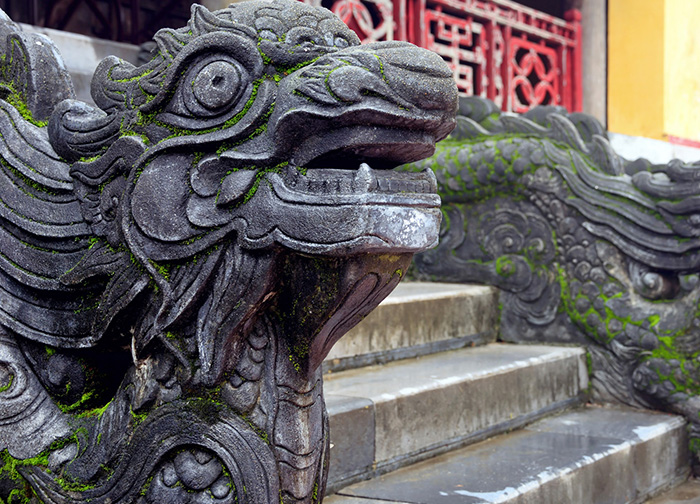
The Nghe Temple, once a small shrine and later built into a more impressive temple, honors Hai Phong’s founder, the female General Le Chan, who worked under the Trung sisters to help repel Chinese invaders in 43 AD. Locals consider it an important religious site, so please dress and behave respectfully. Visitors will be fascinated by the intricately carved stonework that adorns the walls, roof, and steps of the temple. The temple is open all year round.
Bao Dai Villa
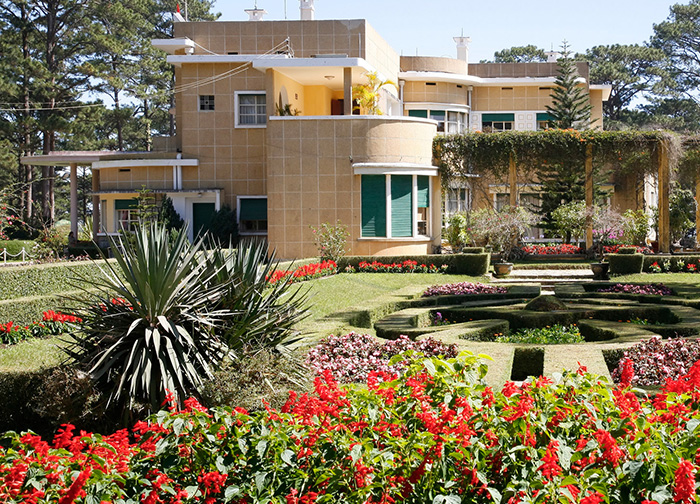
Originally built in 1928 by the French Governor-General of Indochina, Bao Dai Villa was later offered to Vietnam’s last emperor, Bao Dai, in 1946. The emperor loved to visit the villa during summer excursions to the Hai Phong area, enjoying the exquisite views of Do Son Peninsula. Today, the villa is a hotel where guests can pore over old royal photos, try on royal costumes, take picture souvenirs, and see Bao Dai’s throne, as well as take in the beautiful views. The villa is open to guests all year round.
Tours
Guided tours provide useful information, a practical itinerary, and an excellent way for visitors to see the most important sights in Hai Phong while accompanied by a Vietnamese-speaking tour guide, many of whom also speak excellent English. For first-time visitors or veteran travelers, make sure you check out Hai Phong’s best tours to make the most of your time.
Hai Phong City Tour
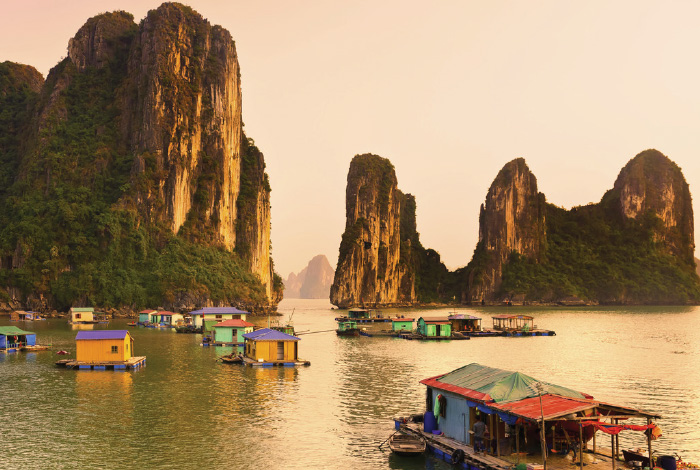
One of the most highly rated tours in Hai Phong, the Hai Phong City Tour is run by Mr. Phuong and his staff of attentive and informed employees. Visitors will get the opportunity to visit Hai Phong City highlights, as well as take day trips to Ha Long Bay, all tidily planned and executed with precision and comfort. All tours include hotel pickup and drop-off. Mr. Phuong is a native of Hai Phong and is incredibly versed in the history of the city, as well as of its hidden treasures.
Tam Bac Lake and Flower Market (Quan hoa)
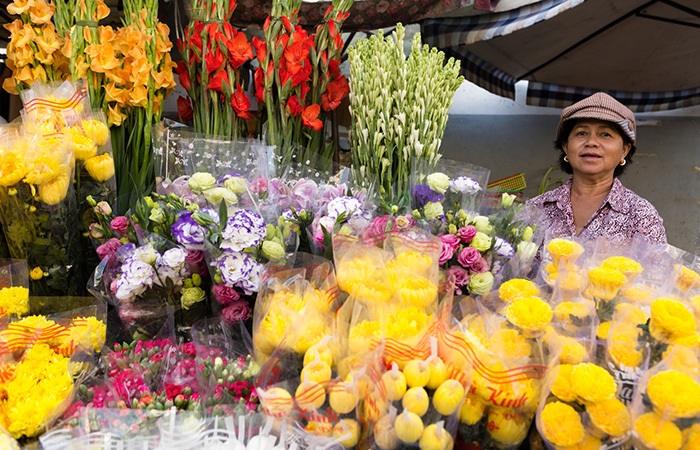
Enjoy a pleasant walk under the trees along the lake’s shore and visit the Flower Market on the eastern side of the lake. The flower market is comprised of five splendid arched-roof kiosks built in 1941 by the French as a beautiful place in which to buy fresh flowers. Also, within easy walking distance of the lake and market is a massive bronze statue of the female General Le Chan, ancient Vietnamese hero and founder of Hai Phong city.
The Colonial Quarter
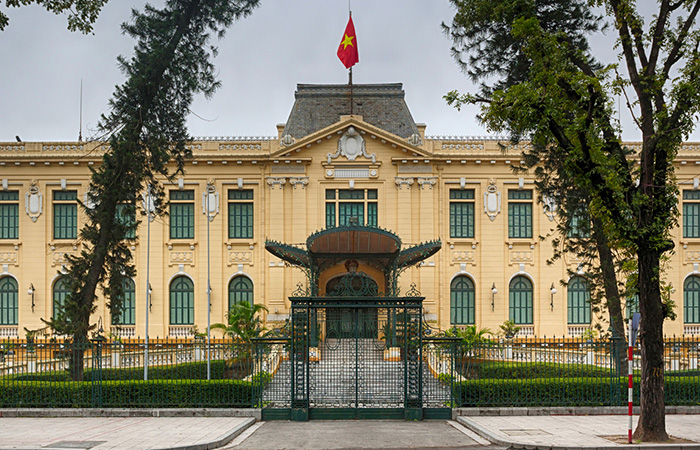
Dien Bien Phu Street and Tran Hung Dao Street have survived many conflicts to become part of the city’s Colonial Quarter, a bastion of surviving French architecture and charm within Hai Phong. Grand colonial buildings, mature trees that line the broad streets, and a thriving café culture all speak to the French influences that helped create this part of old Hai Phong. Stroll the boulevards and gaze at the beautiful buildings. Top off the afternoon of sight-seeing with a drink and a snack at an outdoor café where you can watch the crowd go by.
Exotic Excursions
Cat Ba Island
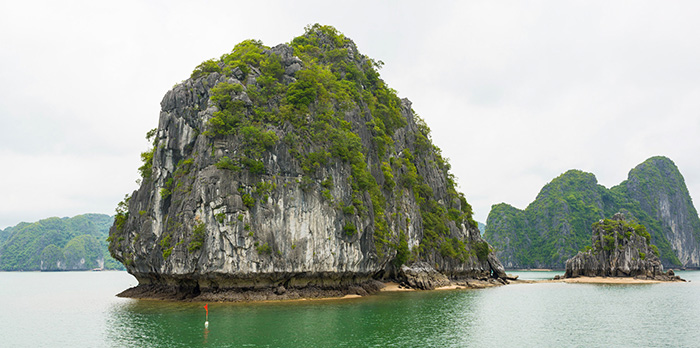
Cat Ba Island is the largest island in Ha Long Bay, a body of water littered with majestic limestone karsts in a blue-green sea. Cat Ba Island is large enough to support a town, which is the most popular overnight stop on Ha Long Bay cruises. Stay a few hours or a few days while you explore the mysterious caves, beautiful beaches, and rugged national park on the island. It is easy to book transportation from Hai Phong Bay, and travel time from the port to the island takes about 45 minutes, with another 15 minutes of travel by bus to Cat Ba Town.
Do Son Beach
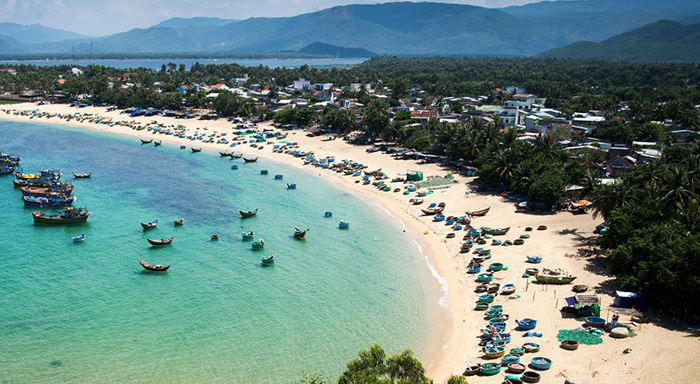
Twenty-two kilometers (14 miles) from Hai Phong lay the three beaches of Do Son, as well as the country’s only casino. What was once a popular resort area for the French is now popular among the Vietnamese, especially sun-seekers traveling from Hanoi. Relax on the white sand beaches and visit the remains of an ancient clay tower and Buddhist temple on Ngoc Son Mountain. This includes the famous temple bell that was submerged in water for centuries after a large storm knocked it out of its place. Watch traditional buffalo fighting during the annual Buffalo Festival in September or October. You will want to arrive on the 9th day of the 8th month according to the lunar calendar to see the fun.
Traditional Hai Phong Food
Because Hai Phong is a harbor city, fresh seafood is widely available, creating the most delicious dishes you have ever tasted. The most famous of the traditional Hai Phong foods rely on the daily catch for their main ingredients.
Banh Da Cua (Brown Noodles with Crab)
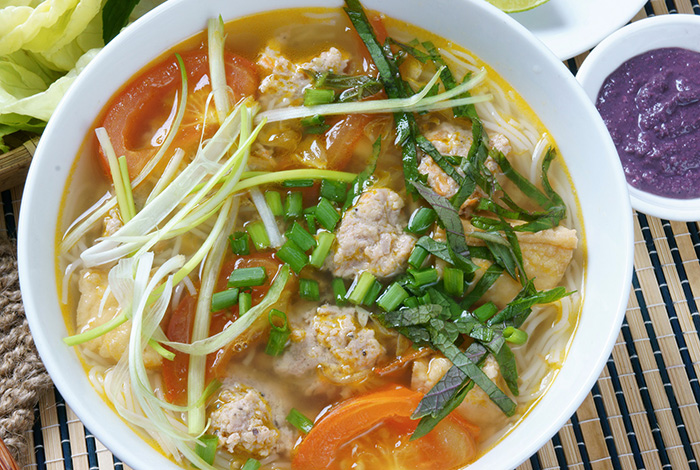
Banh Da Cua is comprised of chewy brown rice noodles and two types of crab meat cakes, pork balls, and beef simmer in a luscious broth cooked with greens. The soup is usually served with a plate of shredded lettuce and perilla leaves. Depending on the restaurant or street vendor, you might also get chilis and nuts added to your bowl. This is comfort food Hai Phong style, a light and delicious meal that will make your taste buds tingle.
Nem Cua Be (Crab Spring Roll)
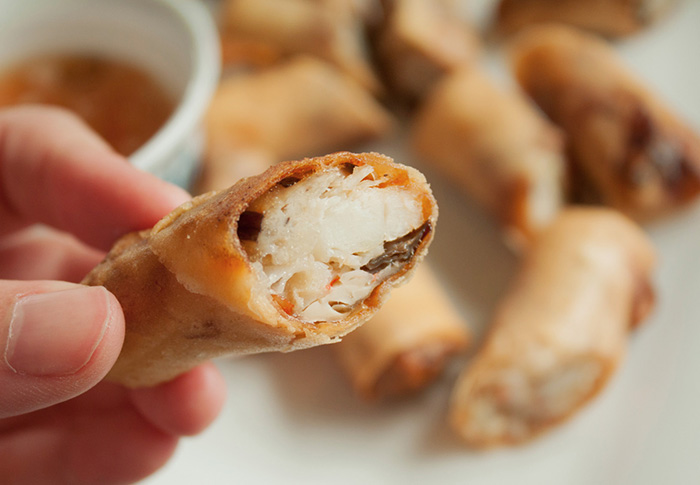
These square spring rolls are packed with a stuffing of ground crab meat, ground crab tile, lean pork, kohlrabi, carrot, ear mushrooms, bean sprouts, rice paper, vermicelli, and seasonings. The rolls are often served alongside rice vermicelli, lettuce, and chopped cucumber, as well as a sweet-spicy-salty-sour dipping sauce. For fans of traditional cylindrical Vietnamese spring rolls (nem ran), nem cua be will not disappoint.
Cool Red Jellyfish Salad
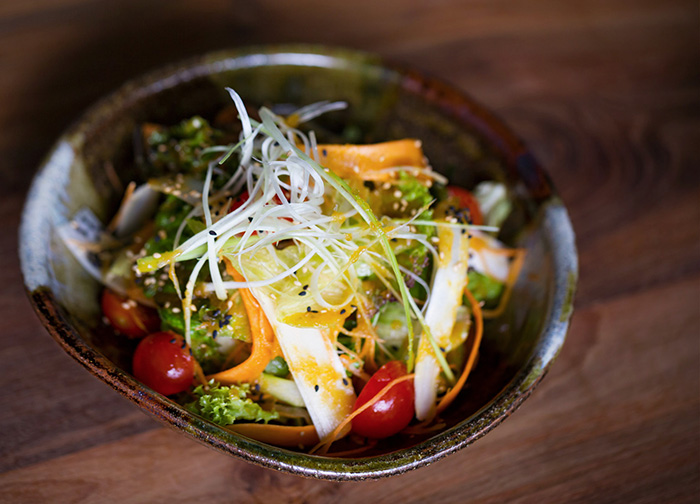
Cool red jellyfish salad is the perfect antidote to the hot, sweltering days of Hai Phong’s summers. Red jellyfish is flavored with lemons, kumquats, and other seasonings before being sliced into bite-size chunks with a bamboo knife. The slices are served with grilled tofu, young coconut, mint, perilla, and shrimp paste.
Fish Noodle
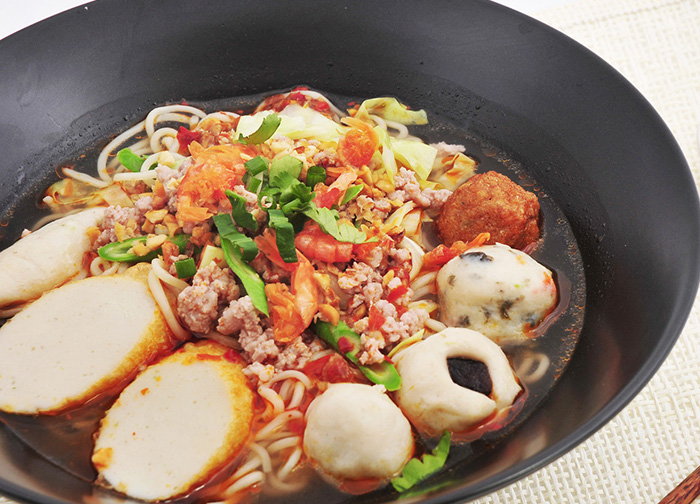
The fish noodle in Hai Phong combines the flavors of the sea with the flavors of the countryside. Both saltwater and freshwater fish are used in this soup, including parts of the fish that Westerners usually do not consider edible: the bladders, stomachs, and heads—all of which impart a unique and delicate flavor to the soup. Vegetables and noodles are added to the broth, making this a satisfying meal in a bowl.
Lau Cua Dong (Freshwater Crab Hotpot)
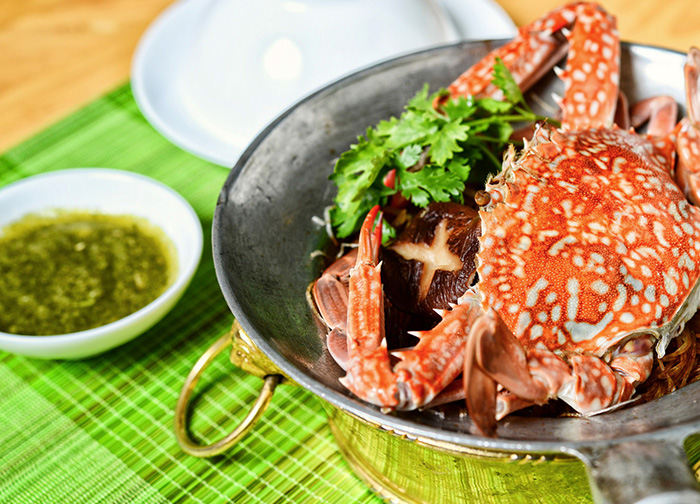
Nothing beats a bowl of hot soup in the winter, and lau cua dong is Hai Phong’s remedy for chilly weather. An aromatic bone broth is packed with freshwater crab meat, beef, fried fish, tofu, vegetables, and mushrooms before being ladled into large bowls.
Siu Din
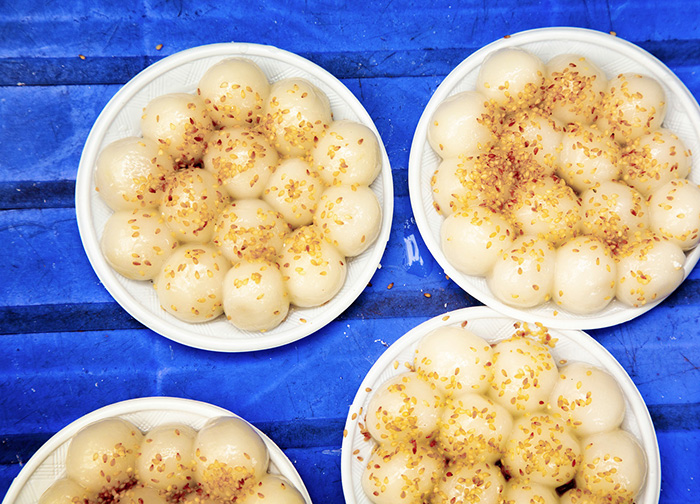
Cakes of pounded rice, sesame seeds, peanuts, and coconut are boiled before being placed in a bowl and drenched in a sweet-salty sauce. This popular street food was brought to Hai Phong by Chinese immigrants living in Ho Chi Minh City.
Visit Hai Phong
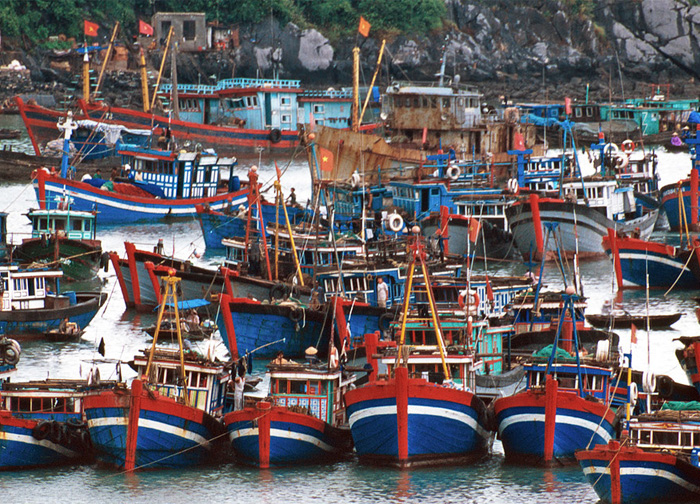
The port city of Hai Phong is a busy, growing city that still retains much of its ancient tradition and culture. Founded by the female general Le Chan in 42AD, the city mixes ancient temples and pagodas, French colonial buildings, and modern architecture into a glorious blend of old and new. From the Colonial Quarter in the heart of the city to the fresh breezes of Do Son Beach, visitors will never be able to get enough of the food, museums, religious sites, and outdoor wonders that Hai Phong has to offer. Before you set out on your journey, let Vietnam Visa help you get your Vietnam travel visa. We make the process quick and simple, giving you time to focus on planning the journey ahead.
